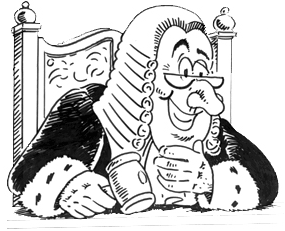YouTube videos are no longer just for entertainment; insteadNo doubt, in theory, lawyers who want to market themselves
the video hosting website is rapidly becoming a reference tool,
creating an entry point into the Web and an opportunity for marketing
directors. Some are even calling YouTube the new Google, as YouTube
becomes as effective as mainstream search engines. In November 2008, 146
million Americans watched videos online, which accounted for 12.6
billion streaming video clips, nearly doubling the number of streaming
videos just 20 months ago. YouTube continues to grow as well, with its
share of videos streamed jumping to 40 percent of all online videos in
November [of last year], as opposed to a 17 percent share in March 2007.
effectively should take advantage of whatever tools they have at their
disposal. Particularly, online resources often offer a cost effective
way to disseminate information to the widest audience possible. This
column has, for instance addressed the growing use of topic specific
blogs as one way of demonstrating a firm's acumen on discreet issues and
topics in the field.
The yellow pages, word of mouth and referrals still offer, to a degree,
the same amount of exposure they have traditionally offered; however, as
the piece points out, as client's and their representatives become more
tech savvy, they are turning more to their computers and the Internet
to conduct due diligence and seek out potential legal counsel.
My knee jerk reaction? There are so much effluvia and trivia available
on the internet. It is not controlled or peer reviewed and so, in a
sense, undermines that all important facet of the well crafted image,
the support of your colleagues and the idea of a standard. It places
your video alongside an endless list of similar ones. True the videos
can be embedded on your firm website and thus eliminate part of the
problem by creating an element of control.
In the piece, they ask an expert to touch upon these points and others
that need to be hit in a model testimonial. Kevin Quinlan, whose
marketing firm at CEPAC.com, specializes in the delicate art of the
YouTube testimonial, rattles of a list of criteria that take all the
spontaneity of YouTube and reduce the process to the making of a
glorified (or deglorified) commercial:
Spin.
Control of tone and content.
Anticipation of audience response and questions.
Distillation of issues down to their simplest denominator.
The modus has changed little, it is just the means of delivery that has
shifted.
There is little disagreement that the milieu for traditional advertising
has changed. To make things more complicated, advertising for services
such as legal ones, has always carried with it an ethical dilemma, as
well as a certain stigma. Where is the line drawn, what is too much?
But by merely converting a late night infomercial to a YouTube video, is
straw, necessarily, being spun into gold?















